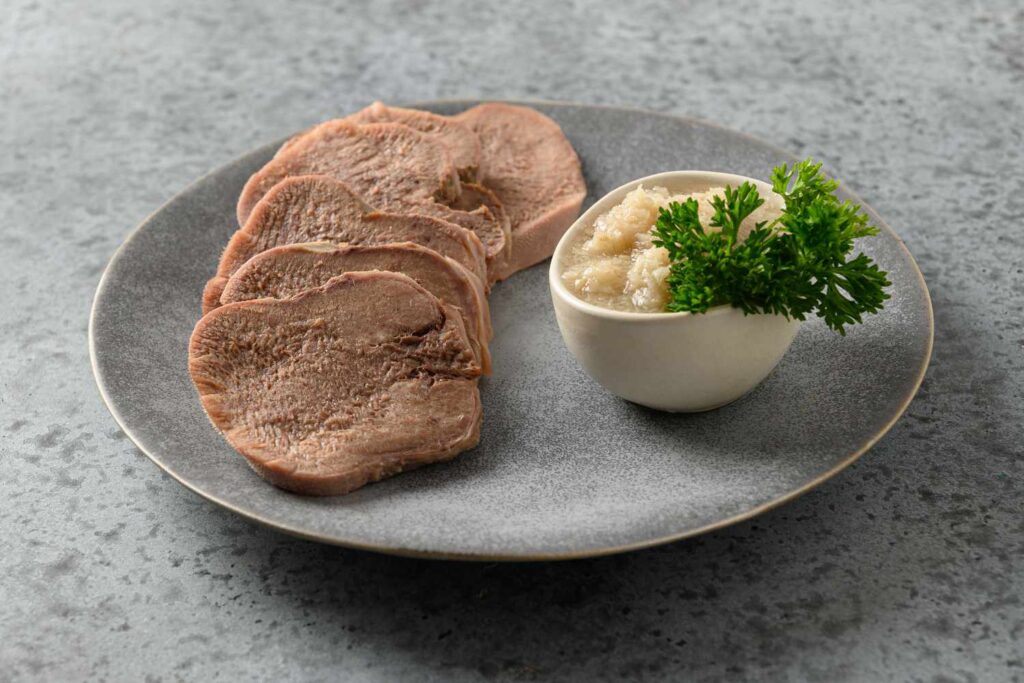What is Lengua? A Comprehensive Guide
Introduction
Lengua, the Spanish word for “tongue,” primarily refers to a culinary dish made from beef tongue. This delicacy is prevalent in various cuisines around the world, particularly in Mexican and Spanish cooking. In this article, we will explore the history, preparation methods, nutritional value, and cultural significance of lengua. We will also provide a detailed FAQ section to address common questions about this unique dish.
Table of Key Information
| Detail | Information |
|---|---|
| Dish Name | Lengua (Beef Tongue) |
| Primary Ingredient | Beef Tongue |
| Cuisines | Mexican, Spanish, Eastern European, Jewish, and more |
| Preparation Methods | Braised, boiled, pickled, roasted |
| Nutritional Benefits | High in protein and fat, rich in vitamins B12 and zinc |
| Common Dishes | Tacos de Lengua, Lengua Estofado, Tongue Sandwiches |
| Cultural Significance | Traditional dish in many cultures, often associated with celebrations |
History of Lengua
The consumption of tongue dates back centuries, with various cultures utilizing all parts of the animal in their cooking. Beef tongue has been a staple in many cuisines due to its rich flavor and tender texture when prepared correctly.In Mexican cuisine, lengua is particularly popular and is often served in tacos, known as tacos de lengua. This dish showcases the versatility of beef tongue, allowing it to absorb flavors from various spices and sauces. In Spain, lengua is typically prepared in a rich sauce, often served with vegetables or in a stew.
Cultural Significance
In many cultures, lengua represents resourcefulness and respect for the animal. Using the entire animal, including less popular cuts like the tongue, reflects a commitment to sustainability and minimizing waste. In Mexican culture, lengua is often served during special occasions and family gatherings, symbolizing celebration and togetherness.
Preparation Methods
1. Cooking Techniques
There are several methods for preparing lengua, each resulting in a unique flavor and texture. Here are the most common techniques:
Braising
Braising is a popular method for cooking lengua, as it allows the meat to become tender and flavorful. The process involves simmering the tongue in a flavorful liquid, such as broth or sauce, for several hours until it is fully cooked.Steps for Braising Lengua:
- Clean the Tongue: Rinse the beef tongue under cold water to remove any impurities.
- Boil: Place the tongue in a pot of boiling water for about 10 minutes. This helps to loosen the skin.
- Remove the Skin: After boiling, remove the tongue from the pot and let it cool slightly. Peel off the outer skin.
- Braise: Place the peeled tongue in a pot with onions, garlic, spices, and enough broth to cover. Simmer for 2-3 hours until tender.
Boiling
Boiling is another straightforward method for cooking lengua. This method is often used as a preliminary step before further preparations, such as slicing for tacos or sandwiches.Steps for Boiling Lengua:
- Prepare the Tongue: Clean and boil the tongue as described above.
- Simmer: Once the skin is removed, return the tongue to the pot and simmer for an additional 1-2 hours until tender.
Pickling
Pickled lengua is a delicacy in some cultures, providing a tangy flavor that complements the richness of the meat. This method involves soaking the cooked tongue in a vinegar-based brine.Steps for Pickling Lengua:
- Cook the Tongue: Prepare the tongue using the boiling or braising method.
- Prepare the Brine: In a separate pot, combine vinegar, water, salt, sugar, and spices (such as peppercorns and bay leaves) to create a brine.
- Pickle: Once the tongue is cooked and cooled, slice it and submerge it in the brine. Let it sit in the refrigerator for at least 24 hours before serving.
2. Common Dishes Featuring Lengua
Tacos de Lengua
One of the most popular ways to enjoy lengua is in tacos. Tacos de lengua are made by finely chopping or shredding the cooked tongue and serving it in soft corn tortillas. They are often topped with onions, cilantro, salsa, and lime.
Lengua Estofado
Lengua estofado is a traditional Spanish dish that features beef tongue braised in a rich tomato-based sauce. This dish is typically served with rice or potatoes and is a favorite during family gatherings and celebrations.
Tongue Sandwiches
In some cultures, lengua is served as a sandwich filling. The cooked tongue is thinly sliced and served on bread with mustard, pickles, and other condiments.
Nutritional Value of Lengua
Beef tongue is a nutrient-dense food that offers several health benefits. Here are some key nutritional highlights:
- High in Protein: Beef tongue is an excellent source of protein, which is essential for muscle growth and repair.
- Rich in Vitamins: It is particularly high in vitamin B12, which is crucial for nerve function and the production of red blood cells.
- Good Source of Zinc: Zinc is important for immune function and overall health.
- Fat Content: While lengua is high in fat, it is primarily made up of healthy fats, contributing to its rich flavor.
Nutritional Breakdown (per 100g of cooked beef tongue)
| Nutrient | Amount |
|---|---|
| Calories | 250 kcal |
| Protein | 21 g |
| Fat | 18 g |
| Carbohydrates | 0 g |
| Vitamin B12 | 2.5 µg (over 100% DV) |
| Zinc | 4.0 mg (36% DV) |
FAQ Section
Q1: What is lengua?
A1: Lengua is a Spanish term for beef tongue, a dish made from the tongue of a cow, commonly used in various cuisines, especially Mexican.
Q2: How is lengua prepared?
A2: Lengua can be prepared by boiling, braising, pickling, or roasting. It is often served in tacos, stews, or sandwiches.
Q3: Is lengua healthy?
A3: Yes, lengua is high in protein and rich in vitamins and minerals, including vitamin B12 and zinc. However, it is also high in fat, so it should be consumed in moderation.
Q4: What are tacos de lengua?
A4: Tacos de lengua are a popular Mexican dish made from finely chopped or shredded beef tongue served in corn tortillas, often topped with onions, cilantro, and salsa.
Q5: Can lengua be eaten cold?
A5: Yes, lengua can be served cold, especially when pickled or used in sandwiches.
Q6: How long does it take to cook lengua?
A6: Cooking lengua typically takes 2-3 hours when braising or boiling, depending on the size and thickness of the tongue.
Q7: Where can I find lengua?
A7: Lengua can be found in many Mexican restaurants, particularly those that serve authentic cuisine. It is also available in butcher shops and some grocery stores.
Q8: Is lengua safe to eat?
A8: Yes, as long as it is properly cooked and handled, lengua is safe to eat. It is important to ensure that the meat is sourced from a reputable supplier.
Conclusion
Lengua, or beef tongue, is a unique and flavorful dish with deep cultural roots in various cuisines around the world. Its versatility allows it to be prepared in many ways, making it a favorite among adventurous eaters. Whether enjoyed in tacos, stews, or sandwiches, lengua offers a rich culinary experience that reflects the resourcefulness and creativity of different cultures.For more detailed information about beef tongue and its culinary uses, you can refer to the Wikipedia page on Beef Tongue.



